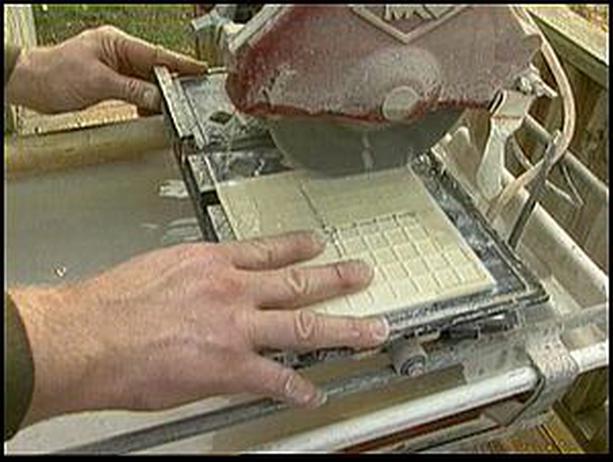Prepping a tile surface is probably the number one thing that is screwed up on all projects started by DIYS. There are many stages that can go wrong in a tile projects and no matter at what point you may be at, from beginning to end, one can easily falter and mess up with tiling.
When prepping a tile surface and not paying attention to the walls or floors being square is an easy way to mess up before you even get started. If the walls and floors are not square then there is no possible way to get a correct and professional appearance. Even if one starts in the center, or field, of the floor or wall there is no way to get a good outcome to the outer edges and no matter how you try to correct this issue it will not turn out the same as one was hoping it to.
After prepping the surface, whether it be a new project or a reconditioning one, it is also important to make sure your bonding agent is the best for your situation. By determining this process one should look into for a Phoenix Tile outlet or any other outlet nationwide, to get a professional answer. When choosing the bonding agent make sure it is for the climate or situation in which you are trying to use it for. In simplistic saying, you won’t use the same bonding for a kitchen tile project as you would for a bathroom shower project.
Even after finding the correct bonding agent, be it a mortar or cement or any other kind, if it is not applied correctly it can and will cause a lot of issues. One problem that many Do it yourself project people do is apply the bonding agent far to heavily. Putting this on to heavy causes lipping; too much clean up issues, mortar squeezing up between the tiles and a host of other issues that can come about over time. Lipping is a problem that can be caused by a host of other issues. When this happens it is easy to see the pulled up corners when in indirect or direct lighting and there are few ways to correct this except to uplift the tiles and start over.
Issues with cracking tiles and cracking grout are often due in fact that the cement or boarding under the tiles has not cured. Many times the cement is laid down and not left to cure properly. Even in situations where curing or cracking after settling can happen over long spans of time. No matter what, with cement, if it is not cured for at least 4 weeks it will cause problems. With sub flooring and underlayment’s if it does not have specific nail patterns and spacing of sheets it will cause an issues. Sometimes these issues are not seen at first but in time they will come about and cause problems.
Workmanship in any tiling project will be an issue. Any tiling that is hurried or rushed along will have some form of problems. Many times a Do it yourself project person will just not take the proper time to complete a project from beginning to end. Even not removing the trim board from a wall or floor is something many people do and this too can create issues. There is simply an endless list of items in the workmanship category that will cause problems even for the best of professionals. In simply saying, taking your time will pay off in the end.
In one of the biggest problems with tiles, past the prepping issues, it is easy to generate the second largest issue with tiles, moisture. Moisture can cause so many issues when tiling a bathroom, near running water, in a laundry room and especially outdoors. This process is due in fact because something was not installed correctly or in other instances something was used that should have not been used. Many times a poorly graded backboard or underlayment is used. Other times is poor grouting or sealing of the tiles that causes water to soak in. Other times it’s a host of things that can totally go wrong and moisture is a major problem for tile projects.
With exterior tiles it’s the multiple problems with the temperature fluctuations, direct sunlight; cement slabs used and poorly set tiles that can be a big issue. Choosing the correct tile for this situation is crucial and is something that needs to be looked into. When finding information on this and a host of other affects to the outdoors, one may look in on Phoenix Tile outlet and many other nationwide outlets to receive proper help in matters such as this. When asking for help let the professional know where you are going to use the tiles, what moisture issues there are and most of all what climate you will be putting these into, especially when it comes to exterior tiles.
Taking on a tiling project by yourself can be daunting at times. When something goes wrong many times it is best to correct is quickly. Trying to correct something after it is set or after days have gone by can be more troublesome then working on it immediately. Take your time, prepare correctly and set a path into motion so that issues like these will not come to haunt you and your project with untimely delays.
Malcom Harris is always making mistakes when tiling.


Great advice for anyone looking to try their hand at tiling. For those who are still unsure it might be worth attending a short tiling course to get to grips with the basics.